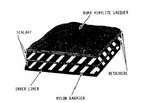Clay_Allison
Staff Sergeant
- 1,154
- Dec 24, 2008
We all know about self-sealing fuel tanks and I've heard that some fighters rerouted exhaust into the fuel tanks to displace any oxygen in the tank to prevent fires.
Were any other systems developed to prevent enemy fire from turning the plane into a fireball if a round went into the tank? (I considered that just having a can of compressed CO2 connected to the gas tank that could be blown off into the tanks would work).
Were any other systems developed to prevent enemy fire from turning the plane into a fireball if a round went into the tank? (I considered that just having a can of compressed CO2 connected to the gas tank that could be blown off into the tanks would work).



